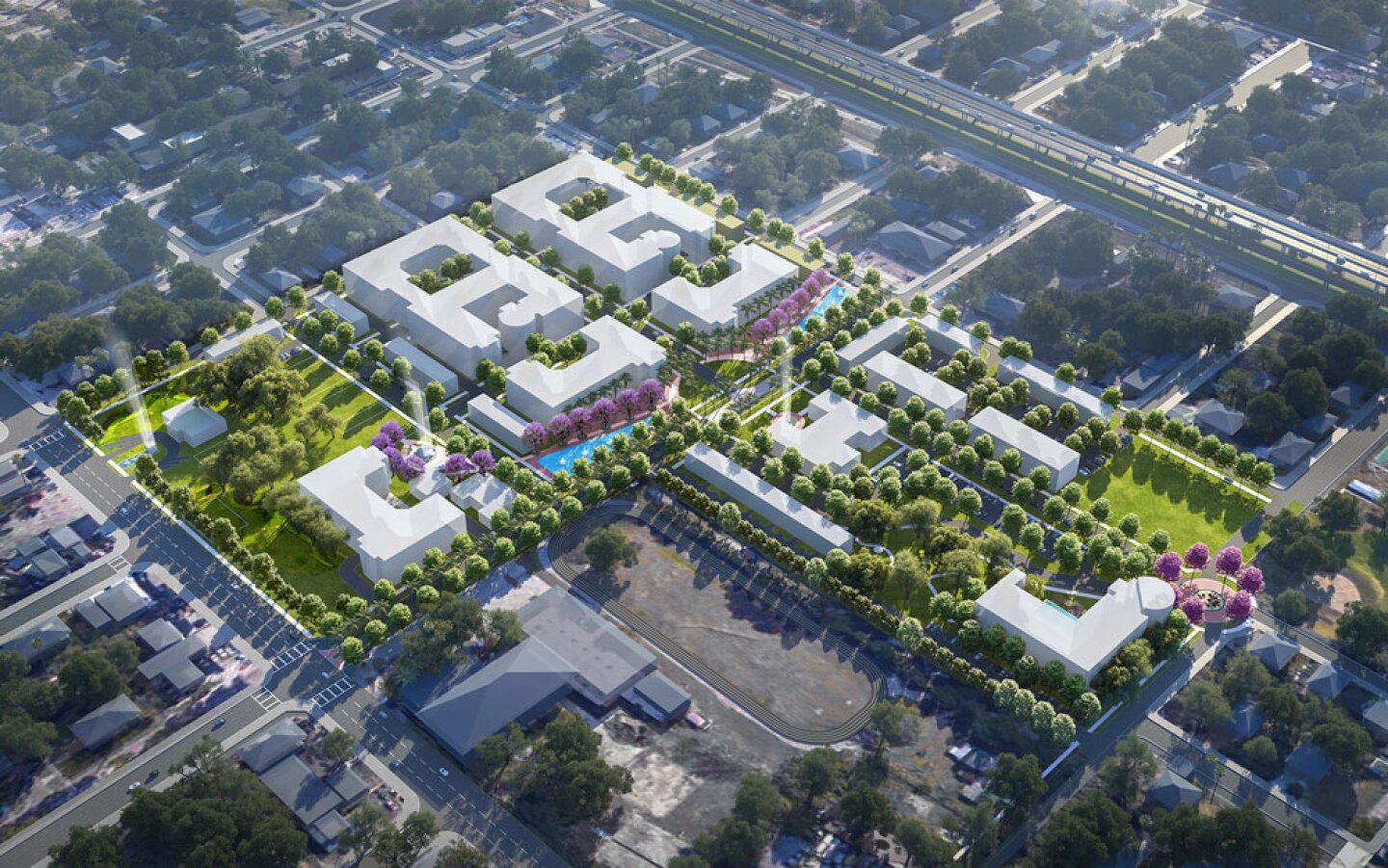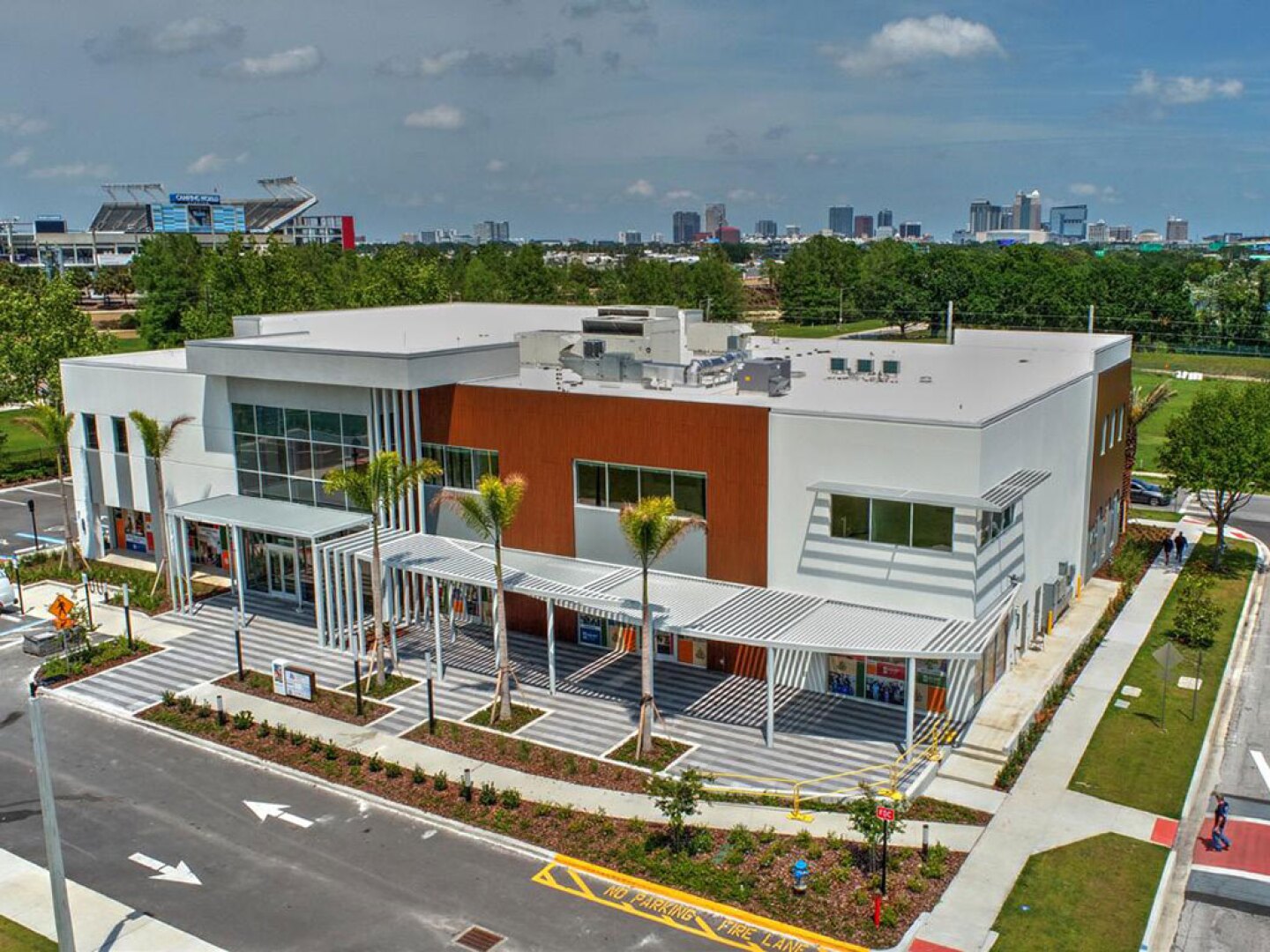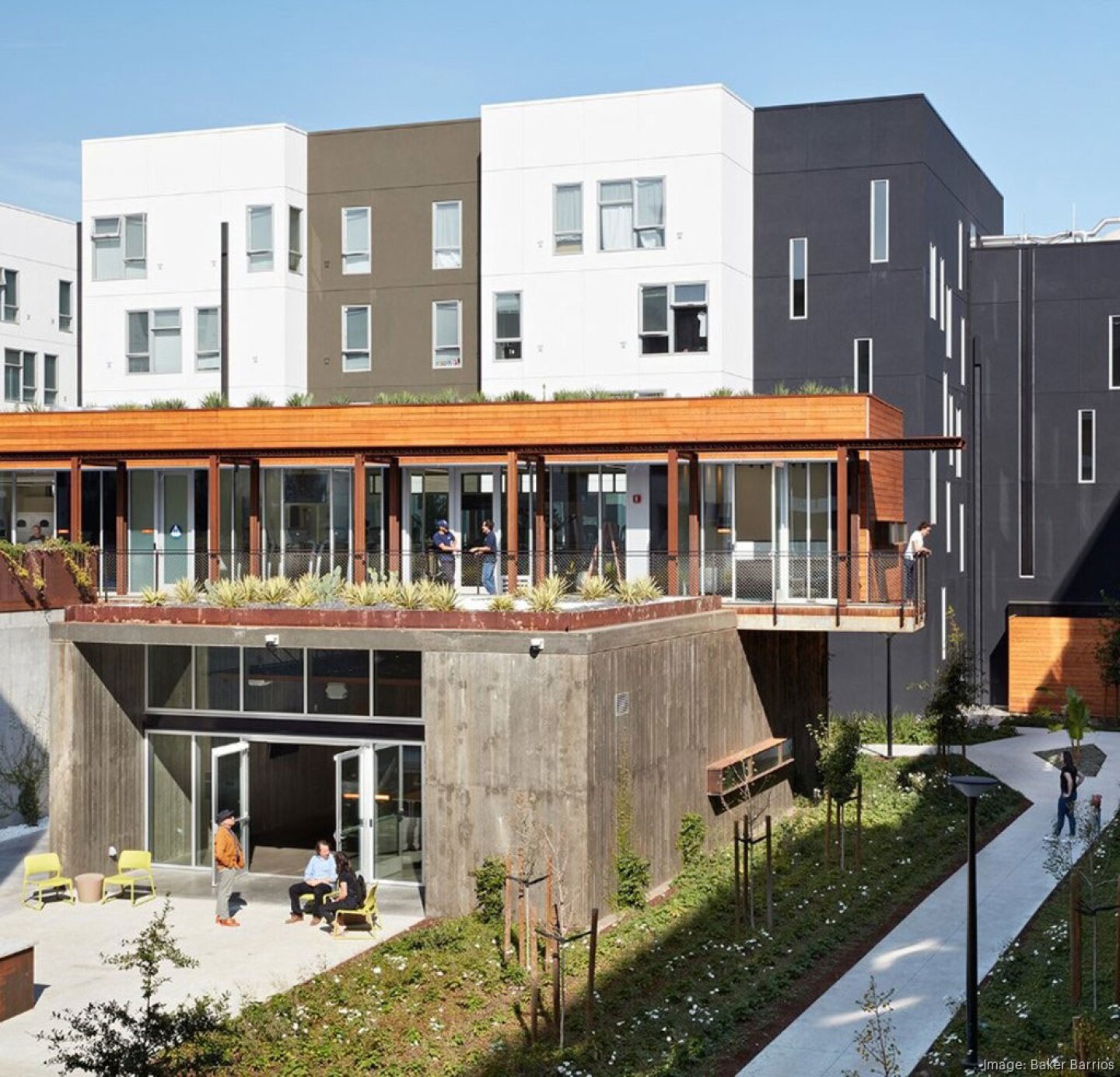Affordable housing initiatives based on whole-person methodologies and cradle-to-career programs aren’t necessarily new. In fact, many times they haven’t worked. Why? The challenge, as the affordable housing team of architects and urban planners at Baker Barrios sees it, is getting the separate community elements (e.g., the local healthcare system, area colleges and tech schools, childcare providers and Head Start programs, etc.) to work together. These services and supports all play a part in a successful community—each a vital spoke of the wheel—but are often missing a cohesive hub.
To formalize our thinking, Baker Barrios distilled many decades of designing and observing affordable housing developments into a new program called THRIVE, a holistic strategy that goes beyond building the physical place. The program, which is replicable, focuses on providing essential community services in a centralized location to ensure easy access for residents.
Dedicated role
To support the program, Baker Barrios created a new job focused solely on THRIVE—a community liaison to help stakeholders stay connected: architects, contractors, developers, municipal leaders, service providers, residents, etc. We found this position to be the vital link to ensure that everyone and everything works well together, from initial planning to first move-ins and beyond.
At the core of every THRIVE-designed community is a central hub providing designated services around four key pillars: basic needs and services, including housing; educational opportunities; health and wellness services; and job and economic vitality supports. Each hub is governed by a community board made up of local business and service providers, experienced nonprofit leaders, a central services coordinator, and, most importantly, resident ambassadors.
What this looks like in action is a central services building where residents can access all of the professional supports being provided through community partnerships. These services include:
- Basic emergency aid to help stabilize a person or family experiencing homelessness
- Classes on nutrition and cooking, financial wellness, and budgeting
- Spaces for training to build job skills
- Childcare, preschool and school-aged tutoring and support; medical services with a focus on long-term preventive care
- Computer lab, co-working space, and business incubator
- Fitness center
The THRIVE approach also includes a focus on neighborhood pride—a key quality to bring residents together. Gardens and green spaces, playgrounds and pools, art installations, historic monuments, community events, block parties—all of the elements one thinks of when envisioning a vibrant community with a proud identity.
The program was influenced by the state of Tennessee, which reverse-engineered state educational programs to teach job skills specifically required by the industry clusters in the state, thus building a robust workforce with tangible career opportunities. THRIVE also drew inspiration from the Harlem Children’s Zone, which follows a place-based, cradle-to-career approach aimed at breaking the cycle of generational poverty.
LIFT Orlando
One of Baker Barrios’ first projects of this kind, long before it evolved into THRIVE, was LIFT Orlando, a nonprofit partner of the national organization Purpose Built Communities. LIFT Orlando provides support and investment to communities in need in greater Orlando, Florida, with a focus on creating a cycle of prosperity rather than poverty through community partnerships.
The Heart of West Lakes Wellness Center for LIFT Orlando includes medical offices, a financial wellness center, classrooms, a kitchen, and a café. Completed in 2020, the project was part of a larger investment in the redevelopment of West Lakes. After years of disinvestment, LIFT Orlando joined municipal and community leaders to reimagine this neighborhood and what the future could look like for its residents. Today, success stories abound, with measurable job creation, educational achievements, and a path to home ownership.
Similarly, with ENCORE! in Tampa, where Baker Barrios, through the Tampa Housing Authority as well as municipal and community partnerships, was able to create a reinvigorated, mixed-income community that supports multiple generations. The Central Avenue neighborhood had been destroyed by race riots in the 1960s, and gentrification in the 1970s had pushed out the remaining residents of the historic Black community.
In 2010, Baker Barrios joined the Tampa Housing Authority and Bank of America to reinvest in the community to bring back affordable housing for families and seniors, and to create a residential-and-business district that honors the community’s rich Black history. Today, ENCORE! is a vibrant, mixed-use neighborhood with parks and community spaces that play host to a robust calendar of events, including a jazz festival, an urban farm, multiple resources for education and job assistance, and more.

Baker Barrios is working once again with the Tampa Housing Authority, along with development partner PMG, to rebuild and reimage Robles Park Village, the city’s oldest public housing project and an example of the misguided approaches of the past that led to crowded and isolated public housing.
(Baker Barrios)
What’s next
Baker Barrios is working once again with the Tampa Housing Authority, along with development partner PMG, to rebuild and reimage Robles Park Village, the city’s oldest public housing project and an example of the misguided approaches of the past that led to crowded and isolated public housing. Our redevelopment plans, which were created with direct and frequent feedback from the residents over several years, will include nearly triple the number of low-income housing units along with market-rate units, retail space, a grocery store, and a centralized hub for residents to access the four pillars of services. Most notably, the new Robles Park Village will also honor Zion Cemetery, the city’s oldest African American burial ground, which will be restored with sculptures and memorials.
Through these examples and our own work, we have learned that by providing a fragile neighborhood with access to various opportunities, we can transform that neighborhood into a thriving community.







